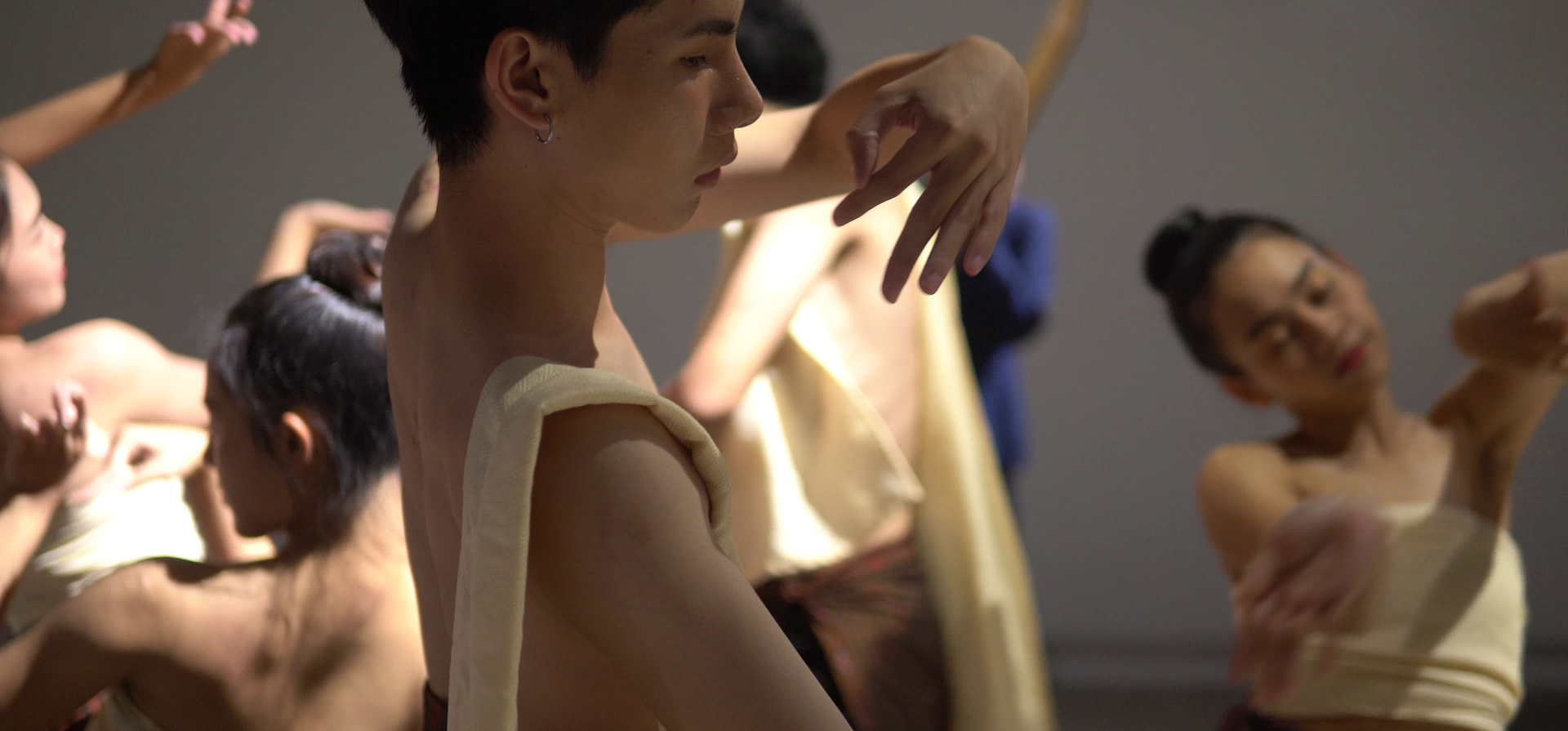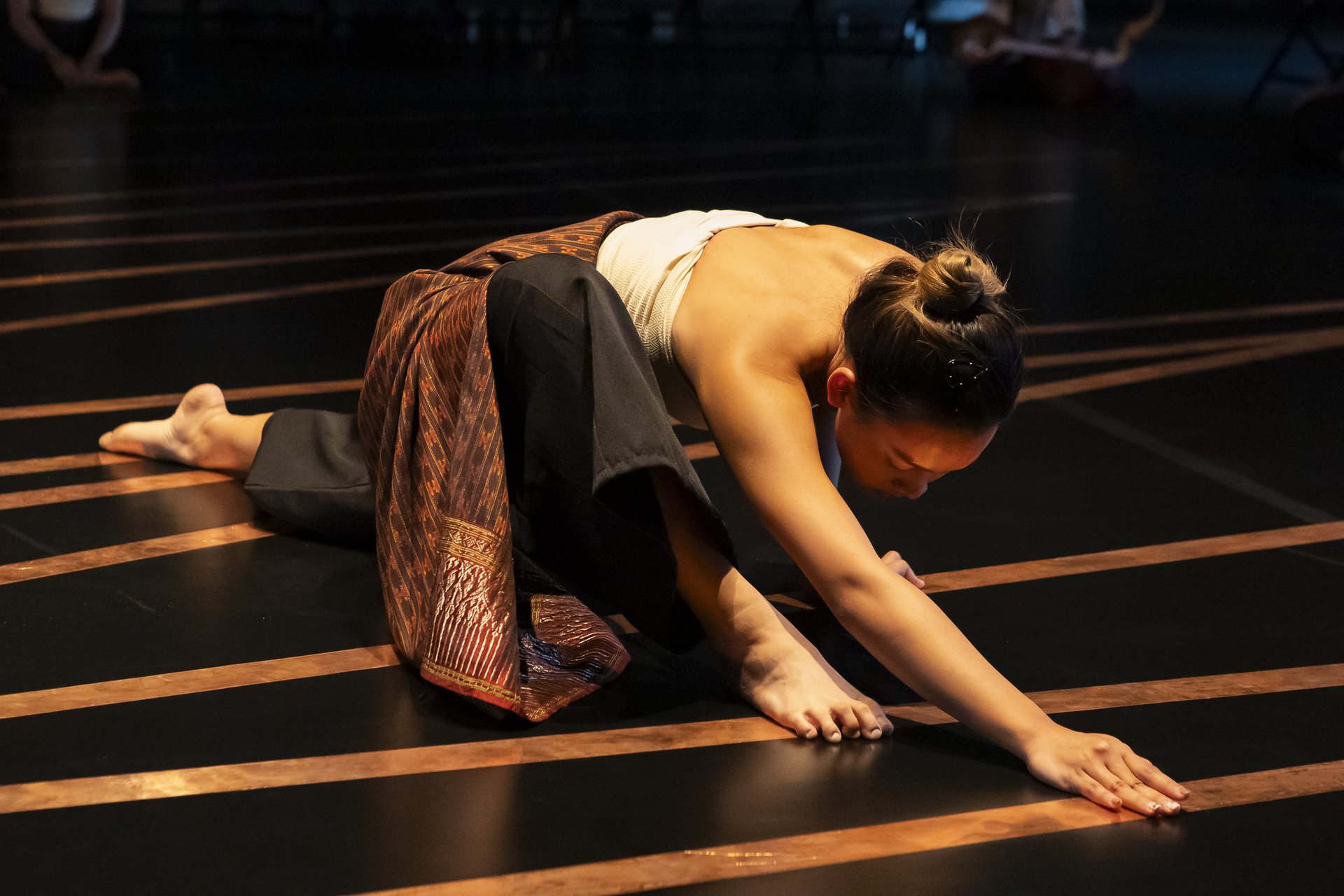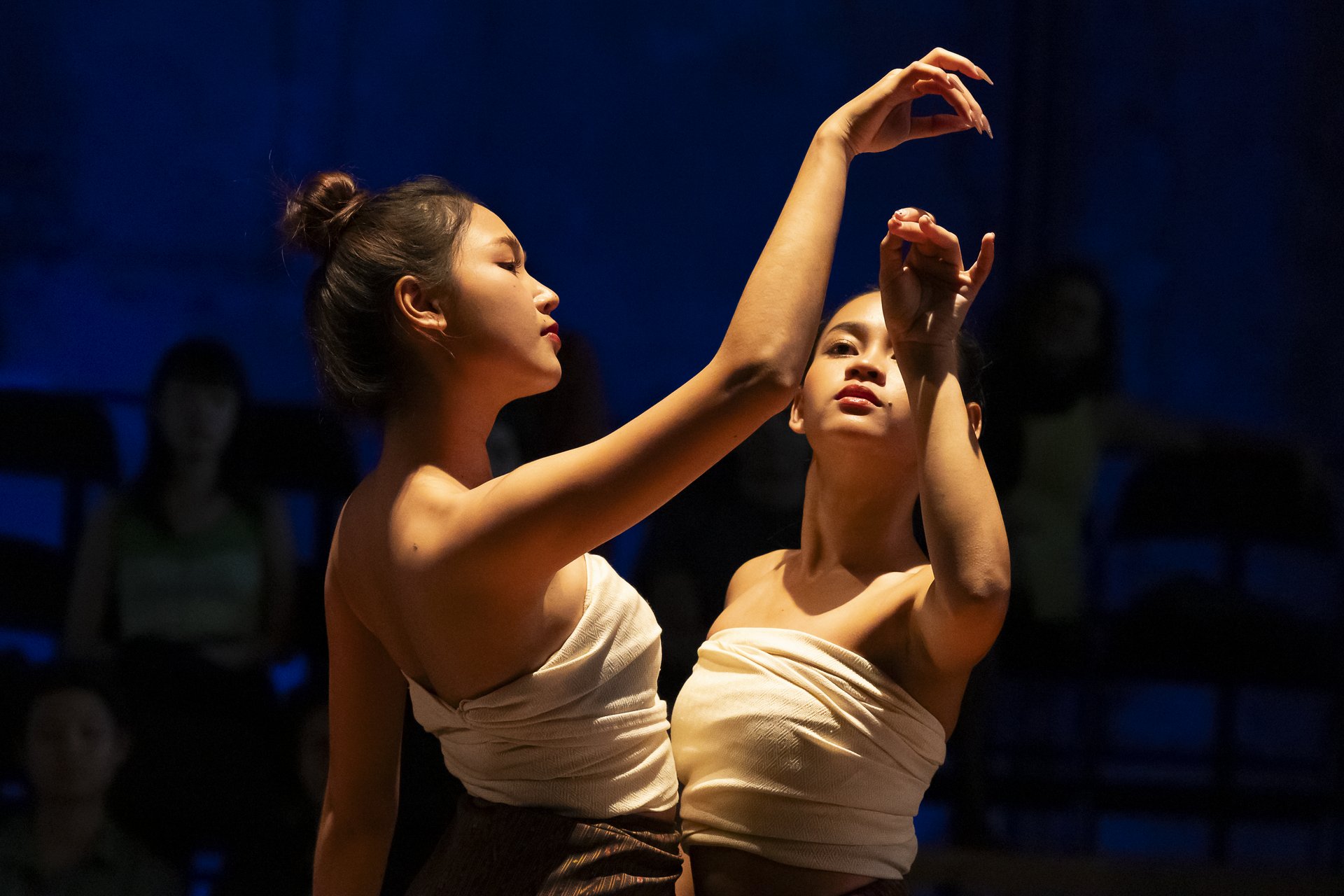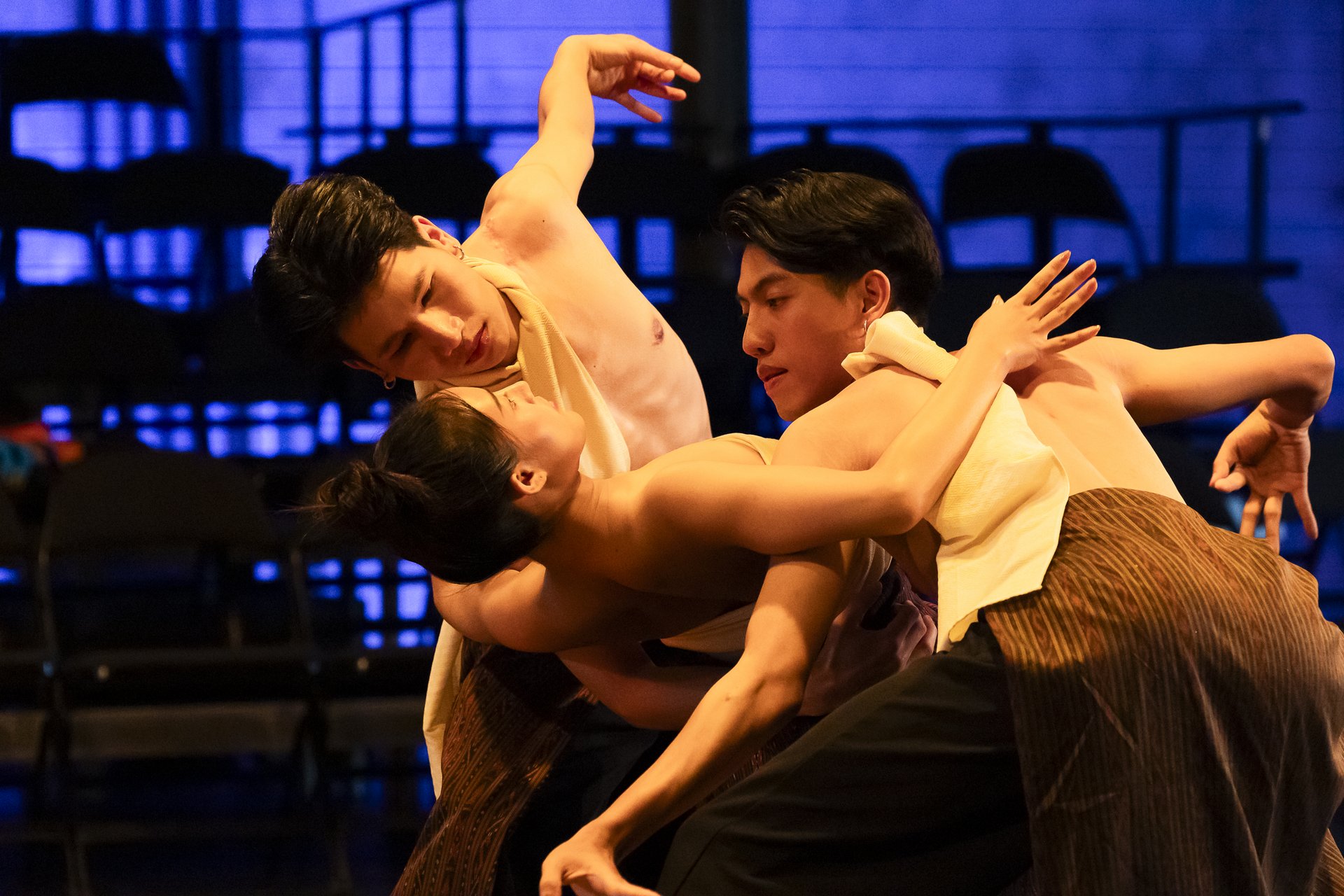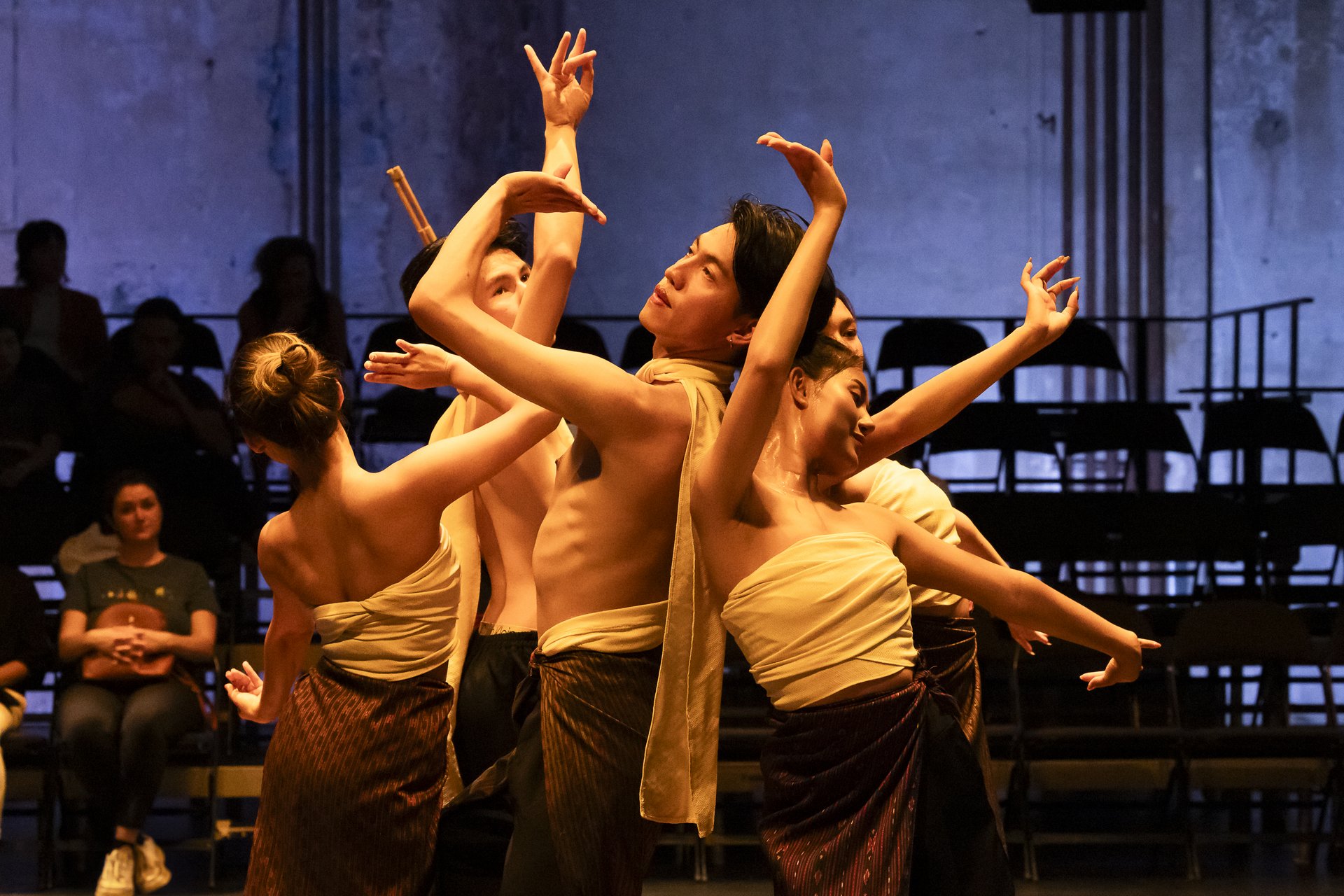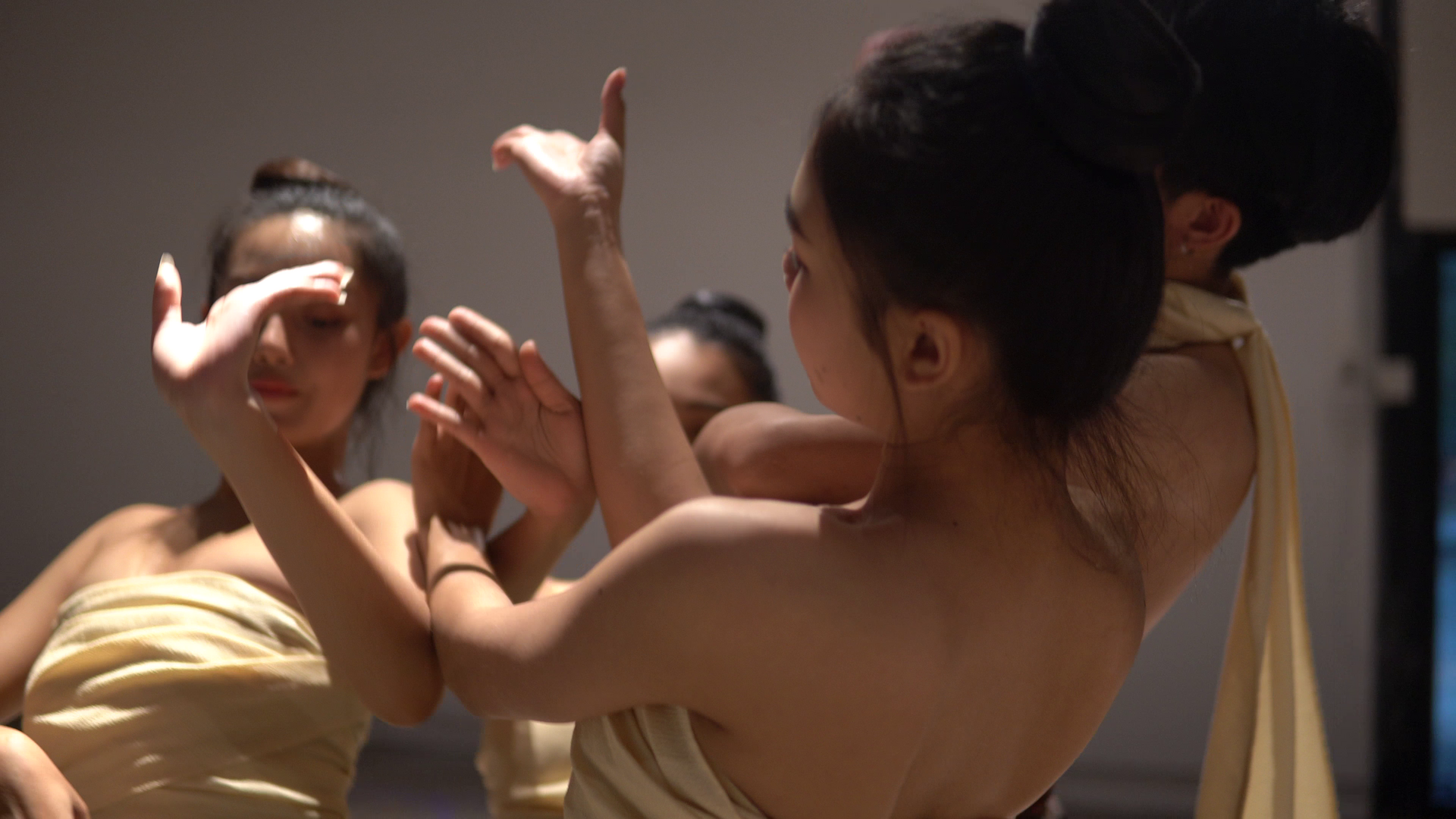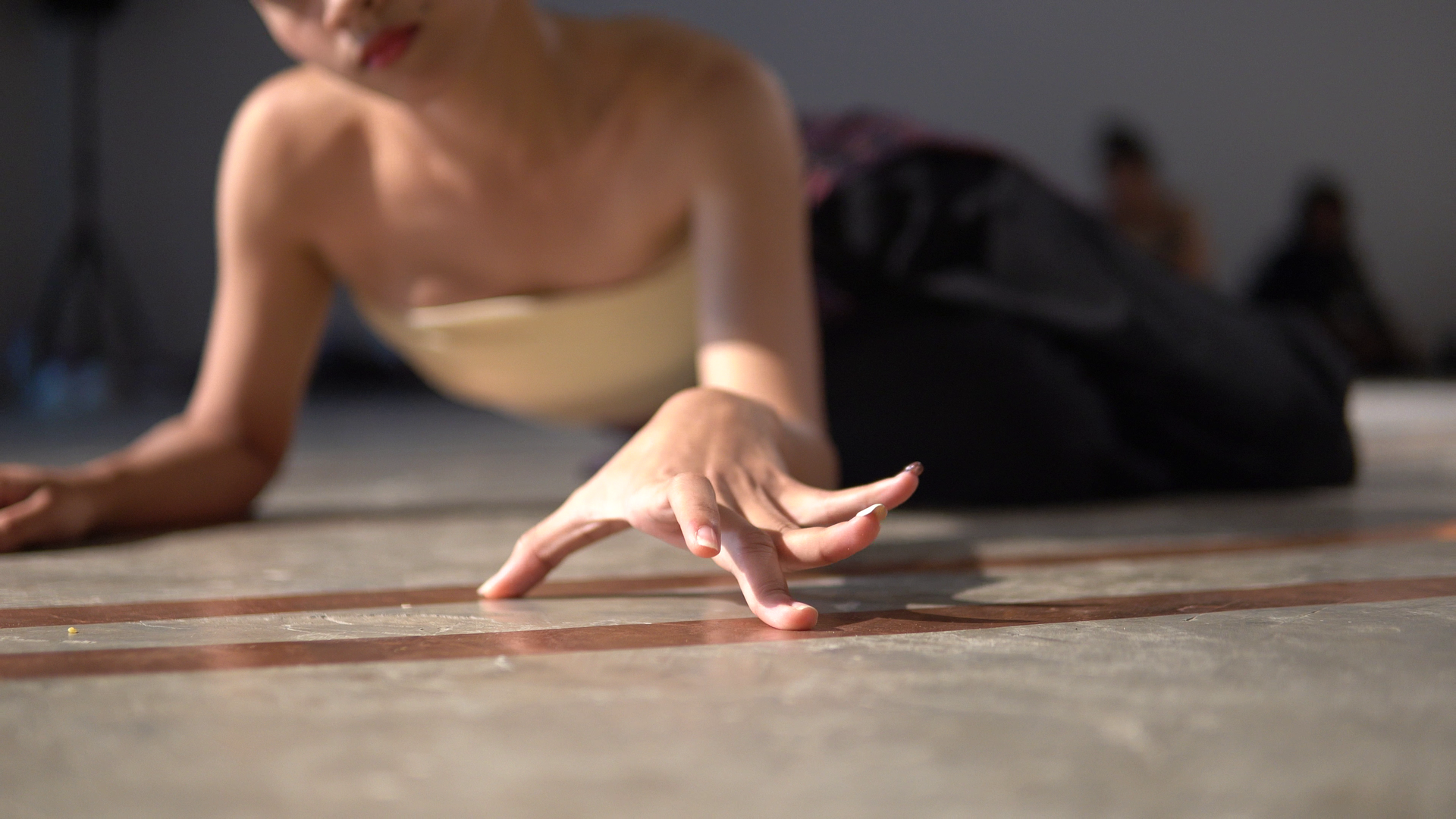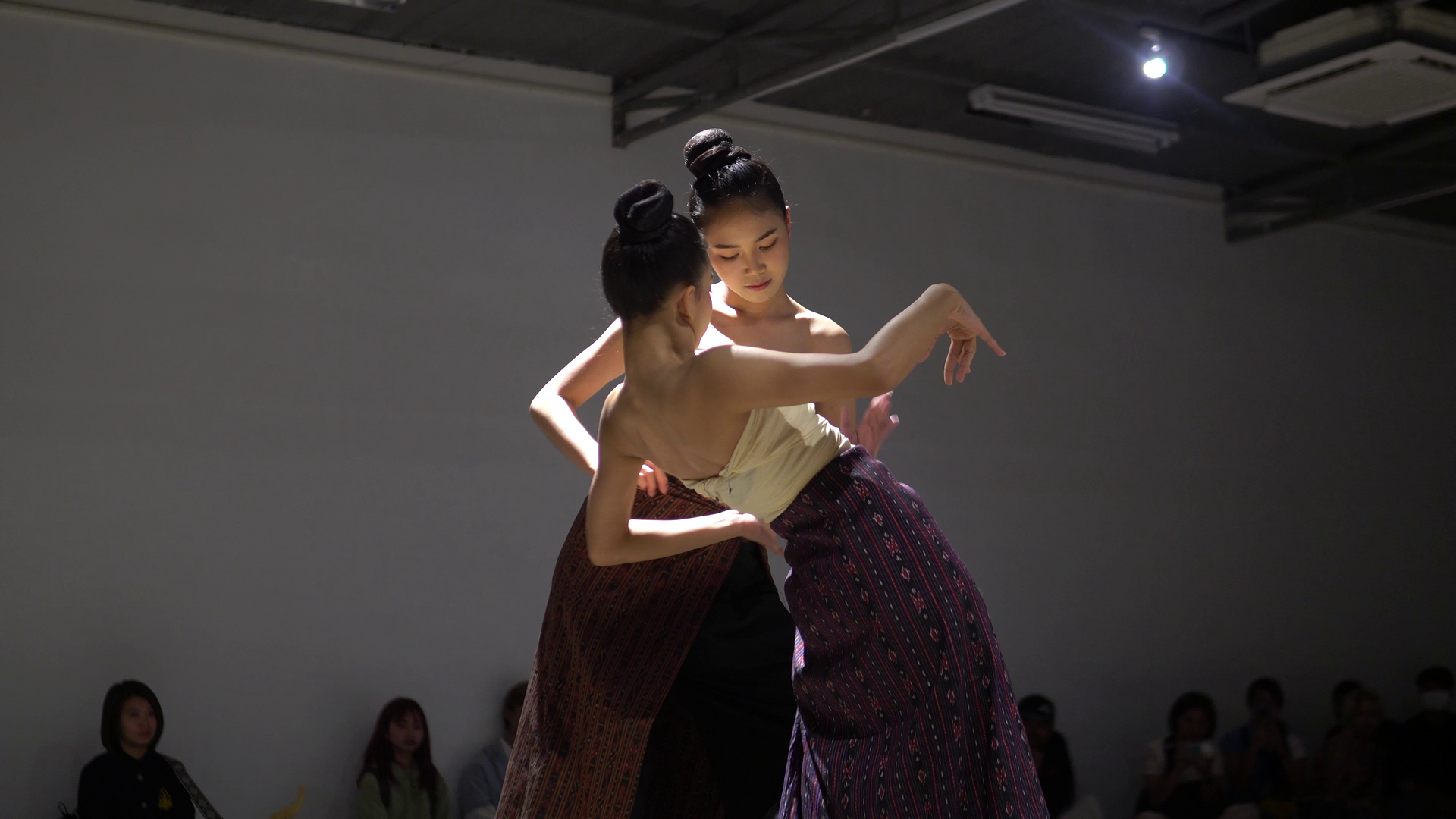In “suân ซ่วน” by Nguyễn + Transitory, a sound installation comes to life through touch. The performance mixes old dances and music from Isan (Thailand) with electronics, showing how the past, closeness, and trust can create new strength.
Nguyễn + Transitory move through the liminal spaces between sound, performance and installation. In their work, a touch-activated sound scenography becomes a living instrument – shifting with every gesture, every point of contact between skin and copper. Traditional folk dances and music from Isan intertwine with electronic textures, queering tradition and creating dialogues between the ancestral and the contemporary. “suân ซ่วน” traces how the past lingers in the present and how it transforms itself. At its heart, it is an exploration of dependency, vulnerability, proximity and trust as forms of collective resilience.
www.nguyentransitory.com
Here you can learn more about Nguyễn + Transitory and their work “suân ซ่วน”. The video interview is in English.
Tickets
Full 22 €
Reduced 13 €
Additional service fees for online booking with Reservix apply.
Artist's Note by Nguyễn + Transitory
Our inquiry began with Thai performance traditions – not as fixed categories, but as practices shaped by history, power, and the people who sustain them. At one extreme, khon embodies the weight of institutional tradition: a dance-drama once confined to royal courts, now upheld as national heritage. Its structure is precise, its narratives codified, its performers trained to near-ritualistic discipline. Yet even within these constraints, artists test boundaries – reimagining movements, subtly bending forms – though the frame itself rarely shifts.
Elsewhere, particularly in the North and Northeast, folk traditional dances follow different rhythms and tell stories that are as much historical as they are contemporary. Less bound by preservation, they adapt by absorbing new stories, gestures, and influences without severing ties to their lineages. This isn’t to say they lack structures, but rather that their structures breathe: a melody might stretch to fit contemporary instrumentation, as clearly shown in the use of the Phin and the Khene in modern pop music; a choreography folding to express a feeling rather than an epic. The result is a living traditional form, one that evolves because it must – not in spite of tradition, but through it.
This difference isn’t merely aesthetic. It reflects who controls cultural memory. Khon, polished and institutionalized, often speaks for (and to) the state. Folk forms, dispersed and decentralized, speak from the margins – allowing the performers from Khon Kaen, for instance, to weave today’s tensions into ancient patterns. Our research inhabits these edges, where tradition isn’t preserved but practiced – less a monument than an ongoing conversation.
— Nguyễn + Transitory
